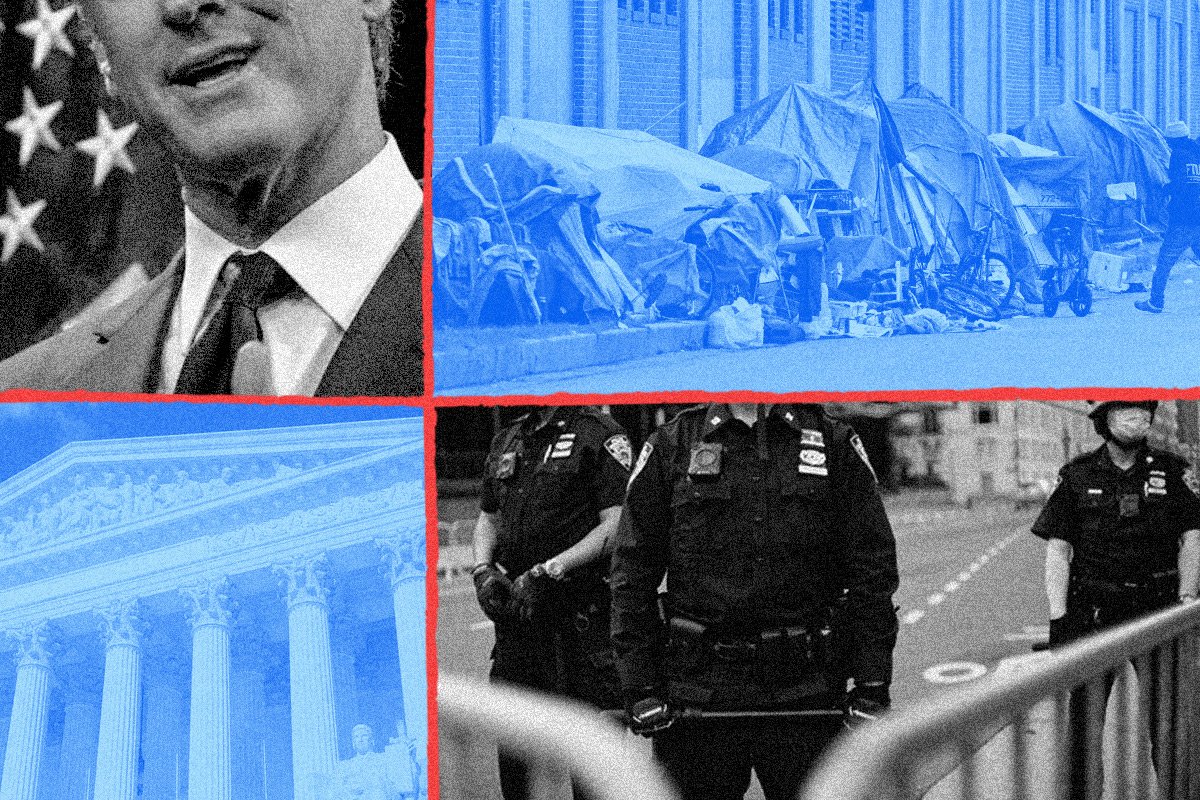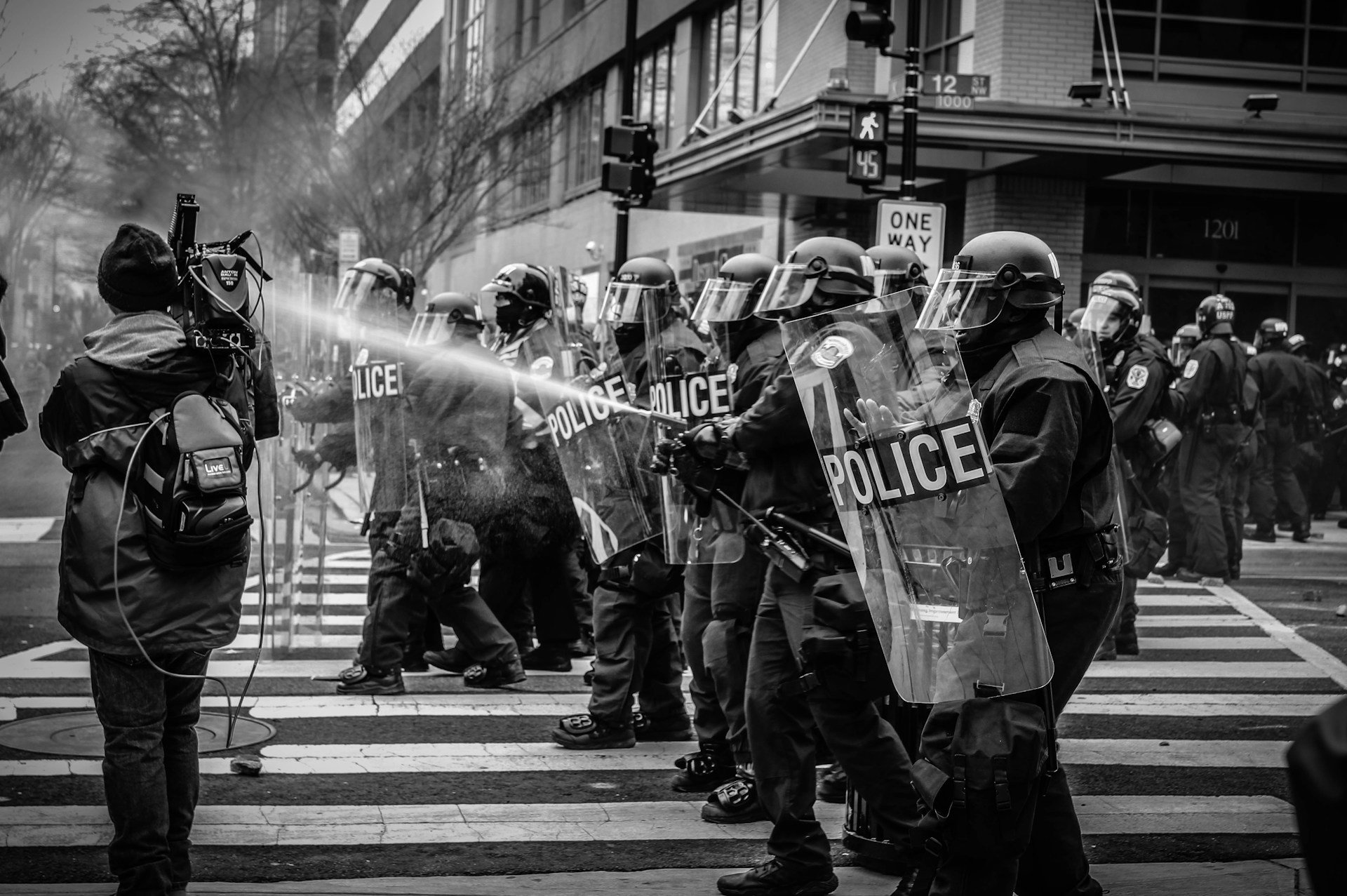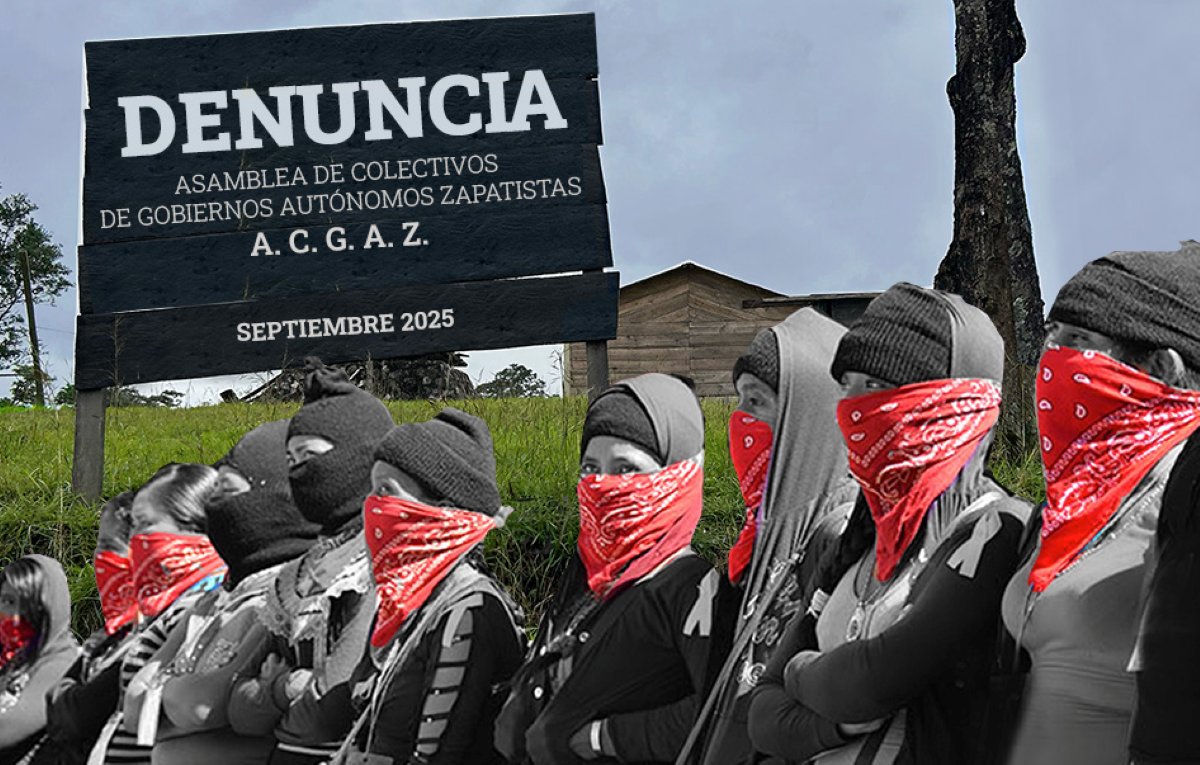Filed under: Analysis, Capitalism, Featured, Housing, US

A look at the growing social crisis of housing and increasing attacks on the houseless following the recent Grants Pass decision. Originally posted by the Black Rose Anarchist Federation.
by Neil B.
In the last several years, the total rate of those lacking safe, clean, and stable shelter in the United States has increased by double-digit percentages year-over-year. This ‘crisis’, as it is often called, is an increasingly extreme manifestation of the degradations built-in to the structures of a capitalist housing market maintained and protected by the state.
The state has shown itself unable and unwilling to muster the resources necessary to confront the growing scale of human degradation and misery on the housing front. Instead, at the behest of the real estate, land owning, and landlord interests it is ultimately beholden to, the state is mobilizing its punitive and carceral capacities to ‘deal’ with this issue.
As Neil B. argues in this analysis of one area in the housing conjuncture, anything resembling a humane social response to this crisis will require fighting social movements to wrench concessions from the state. Without independent combative movements applying pressure through direct action, the state and the various fractions of the capitalist class that hold sway over it will reach first for police, violence, and prisons to ‘solve’ social problems.
For those of us who have been working and organizing with unhoused communities for a long time, the Supreme Court’s recent decision in City of Grants Pass v. Johnson came as little surprise. The much anticipated decision ruled that, contrary to the findings in a 2018 ruling by the 9th Circuit Court of Appeals, fining and criminalizing sleeping in public is not a violation of the 8th Amendment’s clause against cruel and unusual punishment. While cities and states across the country have been finding ways to criminalize poverty anyway, this ruling effectively gave them a green light to open the floodgates.
The 2018 ruling by the 9th Circuit did not start the housing crisis, nor did it really stop cities from punishing unhoused people. What it did do was give them a perfect scapegoat. Los Angeles City Council, for instance, passed 41.18, its flagship ordinance that bans sitting, lying and sleeping in August of 2022. This ordinance had not just been declared unconstitutional twice before, it had been declared unconstitutional by the 2018 9th Circuit ruling. In short, the city of LA was making sleeping outside illegal just after the worst peak of deaths in the COVID pandemic, and at the same time blaming the increase in visible homelessness on the 9th Circuit and blatantly flouting their decision. Rather than encouraging cities to declare housing a human right and create socialized housing for everyone, municipal lawmakers simply chose to get creative about the ways they punished unhoused people.
Still, as is obvious to everyone, the crisis has only gotten worse.
In addition to blaming the 9th Circuit, people blamed the “soft on crime” policies of Democrats, others pointed to addiction, bad choices and mental health issues as the reason why people wind up on the street. However, housed people have addiction issues, make bad choices, and suffer from debilitating mental illnesses yet often don’t wind up on the street, and oftentimes people develop both mental health issues and addiction problems because they are on the street.
The reality is this situation is getting worse because the overwhelming crises of capitalism have made life precarious and untenable for many, many people. Landlords need to charge more and more to pay mortgages or keep up with insurance costs, and bosses need to pay less and less or risk going out of business. It’s a vice grip, squeezing many beyond their breaking point. The gap between rhetoric and reality, whether the willful misrepresentation on the part of frustrated government officials who are sick and tired of getting phone calls from angry ‘not in my back yard’ (NIMBY) groups or the sincere ignorance of people too burdened by their own troubles to think critically about the origins of poverty under capitalist exploitation, will have troubling potential consequences in the wake of this ruling: if people are under the impression that the current problem is primarily due to a lack of law enforcement options, they are going to push for increased carceral solutions.
We have already seen this in anticipation of the ruling. In California, since the CARE (Community Assistance, Recovery and Empowerment) Act went into effect on January 1st, 2024, the government has been building an infrastructure of CARE courts. These courts, under the guise of the insidious euphemism of “care,” exist as a tool to force “service-resistant” unhoused people into mental health treatment, which can strip them of their autonomy and force them to take “stabilization medications” against their will. If a person doesn’t comply, the court can force them into conservatorship. We all saw how difficult it was for Britney Spears to get out of her conservatorship — and she’s a wealthy, internationally famous blonde white woman. What do we think is going to happen to people who are already stigmatized and despised by most people just on the basis that they are poor in public?
The most bewildering aspect of this deepening crisis is that Californians and Angelenos in particular have voted in favor of taxes to pay for low-income housing. The problem is, 50+ years ago Californians, and Angelenos in particular panicked in response to the Fair Housing Act, and in a racist effort to stave off what they feared would be a rapid influx Latinx families, worked to change city codes to make multi-family low-income housing extremely difficult to build. Still, given the general logic and structure of capitalism the idea that building more housing will somehow bring rents down runs counter to reality. Banks, which often finance development and hold mortgages on other properties, aren’t going to finance at a rate that would threaten lowering property values enough to make rent relief through increased supply truly possible. Landlords aren’t going to lower your rent. Put more simply, no matter how much we build, rent goes up, not down.
Even well-meaning politicians are usually powerless to change this dynamic. Without a huge mass of people knocking down their doors and threatening or carrying out disruptive escalation, any effort to impose a serious rent decrease through city ordinance or law, would meet a swift and massive backlash from landlords, developers, and banks. As Black Rose/Rosa Negra states in our Program, the state is the administrative arm of the capitalist class. It is a tool designed to work in one direction. As such, their true function is to participate in the constant cycle of gentrification as the enforcers and janitors- sweeping up the mess. The state is a hammer constantly in search of a nail, and over and over again the nails it strikes are “undesirable” communities: poor, Black, urban, trans, queer, immigrant, brown, Indigenous, unhoused – whoever the undesirable community they target is, they have one tool: identify an activity, make it illegal, throw them in jail.
And why would they stop? Prisons are a big business in the United States. We have more prisoners than any other country on Earth. Prison labor, i.e. slave labor, keeps many household-name American companies profitable. Prisons are one strategy American lawmakers use to revitalize the economy of communities where their core industry — be it coal, gas, mining, manufacturing, or something else — has collapsed for any number of reasons, be it offshoring labor to “developing” countries that are more easily exploitable, or “greenwashing” industry, or simply resource depletion. Since prisons are an economic revitalization strategy, then the administrative class has to find ways to provide a steady supply of bodies to keep the prison running. Never mind the fact that, in the case of unhoused people, it would be far cheaper to pay a person’s rent in an apartment than it is to imprison them or force them into managed “care” via a CARE court. That’s because housing people isn’t the point: perpetuating the status quo is. Without a stick to threaten would-be revolutionaries or troublemakers, it would be much harder for the state to maintain a steady labor supply for the capitalist class.
Moreover, lucrative cottage industries within the nonprofit industrial complex have developed to manage the so-called “homelessness crisis.” There are non-profits who specialize in street medicine that accompany the sanitation department to sweeps; city departments, like the LA sanitation department, and others have teams of people trained to clean and manage encampments; there are Homeless Outreach workers, and caseworkers, mental health care workers; and city council districts have homelessness teams. Teams of experts get lucrative consulting fees giving this opinion or that on how to fix the problem. If we were to house everyone through a robust socialized housing program, all of these people would lose their jobs. It is a cruel irony that the organizations established to help unhoused people need the crisis to survive.
In the wake of the Supreme Court’s ruling, circumstances in LA are a powder keg. Despite the fact that LA’s mayor Karen Bass declared a state of emergency on homelessness, in February the city council ended its COVID eviction moratorium. In anticipation of this, LA landlords filed more than 70,000 evictions in 2023. The hypocrisy of calling homelessness a crisis while processing over 70,000 evictions to go through is mind boggling. Meanwhile, through the use of 41.18 special enforcement zones, the city has created a swiss cheese of areas where it is possible for unhoused people to put their tents. Unfortunately, most of those are near residential areas where people are particularly hostile to encampments. Residents call the police and their council people who then turn around and order sweeps of the encampments. LA city council is pitting housed and unhoused Angelenos against one another, while blaming the problem on the 9th Circuit Court of Appeals.
Even when people mean well, their reliance on the existing infrastructure corrupts their intention.
Case in point: the mayor of Los Angeles’s core campaign issue was addressing houselessness. A week after declaring the aforementioned state of emergency she launched her flagship Inside Safe program; “building the plane while flying,” as she said. Surely, a plane that is being built while flying is destined to crash, and Inside Safe has been a monumentally expensive wreck.
In short, Inside Safe uses the city’s 41.18 ordinance (colloquially called the “no sit, sleep, or lie” law) to target particularly unpopular encampments for removal. They tell participants that entering Inside Safe is voluntary, but if they don’t join they have to move somewhere else or they will be ticketed daily. If participants agree to go in they have to give up their tent and all of their belongings beyond what fits in two duffel bags. They are not told where they are going or for how long they can expect to be there. They are told they will receive services like mental health treatment, ID vouchers, help finding employment, etc. They are also promised entry into permanent housing within ninety days of entering. Then, they are taken to one of about a dozen or so roach motels around the city, sometimes within the vicinity of where they were staying, sometimes not, and left to their own devices.
Don’t get me wrong; many people are excited to enter Inside Safe because they believe the mayor’s promises. For the vast majority of the people, though, nothing materializes except prison-like conditions of boredom, isolation, and increasing hopelessness.
According to a report written by Los Angeles’ Abolition Coalition, of which I am a member through LA Street Care, the Inside Safe program has spent $341 Million dollars on 1,265 participants across 16 locations since it began 18 months ago. It has “permanently housed” 539 people, 236 of whom are back on the streets because they could not afford the $2,200/mo market-rate housing they were assigned after their temporary subsidies ran out. It has also kicked 842 people out and had 44 participants die with some from overdoses and at least one was murdered.
That is a cost of approximately $126,765.80 per person. If the city would have just housed them in market rate apartments for those 18 months, they could have paid $7,042.54 per month in rent for each of the participants for 18 months. More crucially, the city could have taken that $341 Million dollars and built socialized housing instead. It feels more and more like housing people is not the point.
In late July, the Rand Corporation published a report that came to the same basic conclusions our report did: sweeps of encampments do absolutely nothing to change the number of people sleeping on the street. They are little more than a cruel game of whack-a-mole. And yet, the housed NIMBYs keep demanding them, the politicians keep scheduling them, and the vicious cycle continues.
In the wake of the Supreme Court’s decision Mayor Bass issued a statement condemning it and saying that the city of LA was going to continue approaching the problem with compassion. To anyone with their eyes open the knee-jerk response was “what compassion?” Seven City Council members and the LA County Board of Supervisors ordered a review of their legal options in the wake of the ruling. Not to be outdone by the Supreme Court, Governor Newsom on July 25th ordered the removal of all encampments in the state of California, though he bewilderingly claimed it was optional for municipalities to participate.
So long as we continue to rely on the structures of capitalism and the state for solutions to this and other crises we will remain trapped in an escalating cycle of management, or better yet, mis-management. As people continue to push “solutions” and those solutions fail an increasingly frustrated public is going to demand that the government find real solutions, and those solutions will lead to more and more use of force. That is what the Supreme Court gave the green light to.
Things are not all doom and gloom, however. There are reasons for optimism. In Los Angeles, a network of autonomous organizations have assembled the Abolition Coalition. Our work uses outreach as a foundation for community building, but our aims is to fight the city and politicians head on. Under the banner “Inside Starving,” many of these groups wrote the scathing report on Inside Safe cited above that centers the experiences of the people impacted by the program. This is part of a deliberate strategy to pressure the city to come up with real solutions by getting real, reliable information directly from the people who are most impacted. And we have seen some early results. We managed to get a meeting with the Mayor wherein we made a simple request: put in writing what services the participants can expect, and where they are going. Though she refused, our resolve only deepened.
One of the encampments we worked very closely with, the Juanita encampment, was brought into an Inside Safe location. While there they organized themselves as Housing for Juanita. They held a press conference and demanded the dignified treatment they deserved. The city retaliated by making it impossible for anyone from the broader community to enter the location.
Another group associated with the Abolition Coalition, Aetna Street Solidarity, was a long-standing, highly organized encampment that created a thriving community. It partnered with the UCLA Luskin School of Public Affairs to create various educational and practical projects aimed at reframing public space and life in a way that includes unhoused people in the broader concept of “community.” Though they were targeted for removal and swept, the community has remained strong and continues to fight the city’s cruel and repressive policies.
During the pandemic, several people moved into homes that the California Department of Transportation bought through eminent domain decades ago when they proposed an expansion of the 710 freeway. After the proposal was defeated by the community, the houses sat empty. When faced with losing their homes, these folks decided to take matters into their own hands and moved into the abandoned houses. They call themselves the Reclaimers, and they have been fighting the city and state to stay in these homes for years. So far, they have raised the money they need to buy the homes, and have so far staved off eviction as their cases wind their ways through the courts.
Over the last 15 years we have repeatedly seen the rise of mass protests mobilized over pressing problems like Wall Street corruption, racist police violence, and bodily autonomy, growing larger and more frequent over time. The overlapping crises the United States finds itself in are beginning to tear apart the seams of what has been one of the most disastrous empires in human history. This is not to say that we are as organized as we need to be–we are not–but we have ample opportunity to continue to push against institutional weak points, growing the capacity to initiate a social revolution to produce a reorganized society that actually centers human needs, and the needs of all life on the planet. The Grants Pass ruling offers plenty of opportunities to connect struggles — over pay, cost of living, policing, and more. This is an issue for housed people as well, after all. History teaches us that the violence the state imposes on the most marginalized will eventually be imposed on us all — unless we organize and fight to stop them.
For a first hand account of what the reality on the ground will be in the wake of the Grant’s Pass, check out Birdie, an unhoused Angeleno, telling his story here.
If you enjoyed this article, we recommend our national scale conjunctural analysis, published in the 2023 edition of our organization’s program Turning the Tide.





